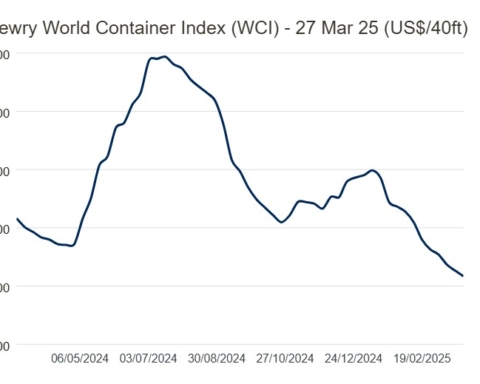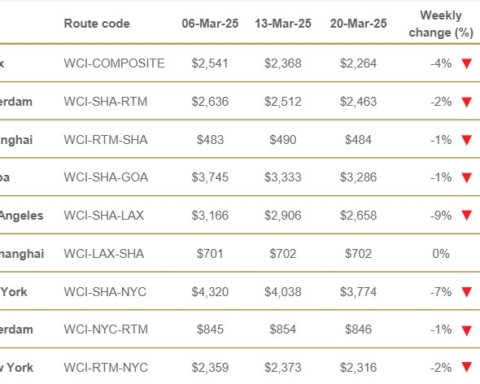The refrigerated cargo market has never been so hot, or indeed, red-hot, according to Drewry, in its Reefer Shipping Annual Review and Forecast 2021/2022. The British analysts point out that tariffs, on the 15 routes this type of traffic uses most, have skyrocketed by 32% in 2021. The forecast is that they will continue to grow in the second half of the year, at rates up by even 50%.
One of the reasons for this increase is the limited stowage capacity currently available on the market. In fact, the reefer trade has had to compete for space with the usually more lucrative dry cargo sector. This is why reefer rates have risen the most on the East-West routes where there has been greater competition for slots on board traditional container ships. On North-South trade lanes, on the other hand, the rise in freight rates has been slower.
The shortage of slots on ships but also of boxes at the beginning of the year was certainly one of the reasons for the record production of new refrigerated containers in the first quarter of 2021. Nevertheless, according to Drewry, the availability of equipment will continue to be limited in the medium term.
Their analysts explain how congestion problems on the main container traffic routes are pushing many BCOs (Beneficial Cargo Owners) to shift their cargo to reefer container ships, which, in turn, catered for only 12% of the total perishable goods shipped in 2020.
Drewry also points out that in the pandemic year, globally, perishable traffic sent by sea fell by 0.4% compared to the previous year, to 132 million tonnes. The downturn was certainly less dramatic than the dry cargo sector’s, which shows the greater ability of reefer trades to weather economic crises. The market has been particularly hard hit by the Covid-19 containment measures, which have reduced agricultural production and fishing activity. The spread of Fusarium TR4 in the Philippines has adversely affected banana production in in a number of countries. In contrast, demand for perishable goods has been significantly boosted by a thriving pork trade.
Despite the downturn in trade, however, the pandemic year witnessed an increase in refrigerated cargo on boxships, which rose by 0.3% to 5.4 million TEUs. Reefer shipping was up in the first half of ’21 with a 4.8% year-on-year growth, driven by the meat, citrus and exotic fruit trade. Drewry sees the strong demand by recovering trade as the driving force behind the gradual expansion of reefer traffic, which analysts say will grow at a faster rate than the dry cargo sector.
Drewry analyst Philip Gray believes that the strong market demand and low availability of vessel slots will continue to support refrigerated container rates and charter earnings for specialized vessels. On the other hand, in his opinion, charter rates for larger reefer ships, which have recently been in particular demand, will fall as available capacity increases.
Translation by Giles Foster




